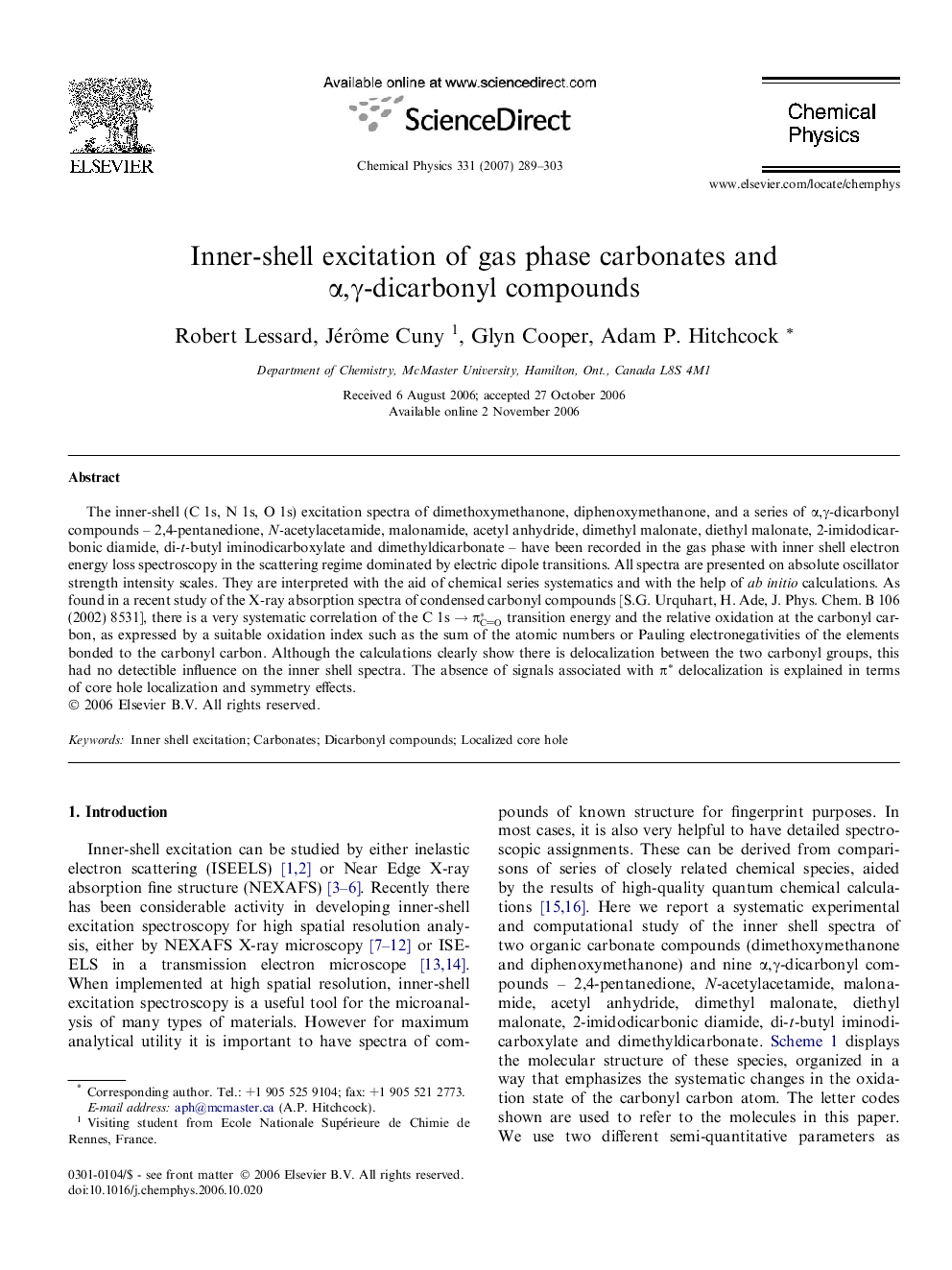| Article ID | Journal | Published Year | Pages | File Type |
|---|---|---|---|---|
| 5376568 | Chemical Physics | 2007 | 15 Pages |
Abstract
The inner-shell (C 1s, N 1s, O 1s) excitation spectra of dimethoxymethanone, diphenoxymethanone, and a series of α,γ-dicarbonyl compounds - 2,4-pentanedione, N-acetylacetamide, malonamide, acetyl anhydride, dimethyl malonate, diethyl malonate, 2-imidodicarbonic diamide, di-t-butyl iminodicarboxylate and dimethyldicarbonate - have been recorded in the gas phase with inner shell electron energy loss spectroscopy in the scattering regime dominated by electric dipole transitions. All spectra are presented on absolute oscillator strength intensity scales. They are interpreted with the aid of chemical series systematics and with the help of ab initio calculations. As found in a recent study of the X-ray absorption spectra of condensed carbonyl compounds [S.G. Urquhart, H. Ade, J. Phys. Chem. B 106 (2002) 8531], there is a very systematic correlation of the C 1sâÏCOâ transition energy and the relative oxidation at the carbonyl carbon, as expressed by a suitable oxidation index such as the sum of the atomic numbers or Pauling electronegativities of the elements bonded to the carbonyl carbon. Although the calculations clearly show there is delocalization between the two carbonyl groups, this had no detectible influence on the inner shell spectra. The absence of signals associated with Ïâ delocalization is explained in terms of core hole localization and symmetry effects.
Related Topics
Physical Sciences and Engineering
Chemistry
Physical and Theoretical Chemistry
Authors
Robert Lessard, Jérôme Cuny, Glyn Cooper, Adam P. Hitchcock,
